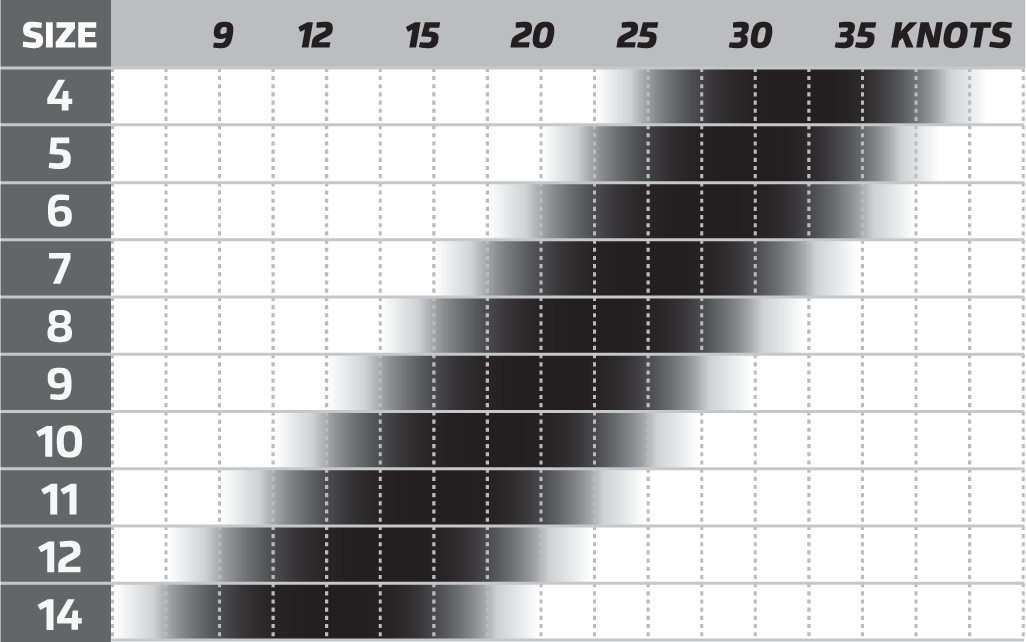
By Billy Swezey
What size kite should I buy? This is one of the most frequently asked questions of people looking to get into the sport of kiteboarding. The right kite is an important consideration for beginners because a good kite can make the learning curve much smoother and the wrong kite can throw some big bumps in there or even be dangerous. In this article, we will go over the basics of kite selection for beginners.
Kite Size
Most kiters own two to three kites allowing them to ride in most windy conditions. As a beginner you might decide to start with just one or two kites. Kite size depends on three things:
- Wind Speed
- Rider weight
- Skill level
Let’s assume the rider has taken or will take a few lessons. They should be able to get long rides in both directions and should at least begin to be riding upwind. With these basic skills we can move on to wind speed and rider weight. These factors change with every person and wind speed changes every day, as well as with the seasons. Most people choose their first kite based on the wind speed that is most prevalent in their area. For the Treasure Coast in the winter, let’s say that this is medium wind 15-20 knots. The last factor is going to be rider weight. Each kite brand has a chart used to match up the kite size with rider weight in certain wind speeds. Here is the kite size chart for Cabrinha Switchblade.

New VS Used
New kites are always a safer bet. There is just more life left in a new kite as long as you take care of it. If you decide to go used, be careful. Try not to buy a used kite older than three years and be wary of the condition. A kite that hasn’t been used much and still has a lot of life left still has a “crispy” feel versus a kite that is well used has more of a “soft” feel. A kite with a “soft” feel can still be ok for the right price and if you can get a sense of how it was cared for, it will just have a shorter life span than other options. Always look closely for holes, repairs, and any worn or chafed parts on the kite or lines.
Kite Style
Some kite styles or designs include c-kites, bow kites, hybrid kites, and foil kites. It is recommended that you stay away from C-kites or C-style hybrids, as well as foil kites for your first kite. Some good models to look at are the Cabrinha Switchblade, North Rebel, or Cabrinha Contra for lighter wind. These are the most user-friendly kites and have good de-power which gives it a much broader wind range compared to other style kites.
In conclusion, pick your kite size based on the wind speed most prevalent in your area and your weight, try to go new, be careful when buying used gear, and stay away from C-style kites and foil kites while you are still new to the sport. It is a good idea to check with your instructor before purchasing gear. Always make sure you are familiar with the safety releases and how they work on any gear you are unfamiliar with. Get out there and have fun!




